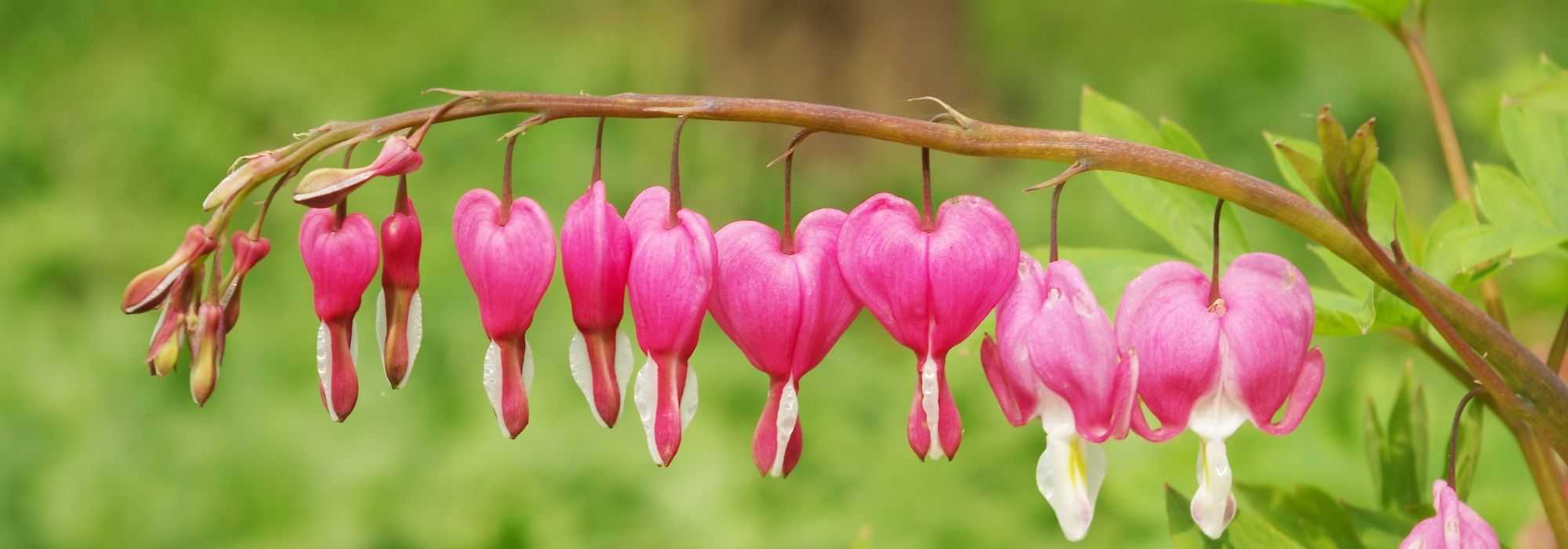
Growing a bleeding heart in a pot
Everything you need to successfully grow Dicentra in pots
Contents
Bleeding heart is one of the most well-known plants with heart-shaped pink flowers. A quintessential cool shade perennial, the Dicentra spectabilis is suitable for pot cultivation. Together with other potted plants, Lamprocapnos or bleeding heart will enhance your shaded terrace or balcony, allowing you to enjoy its beautiful flowers in various colours: white, pink, or red. Find all our tips on where, when, and how to plant the bleeding heart in pots!
Discover everything you need to know about the bleeding heart: planting, growing, and companion planting
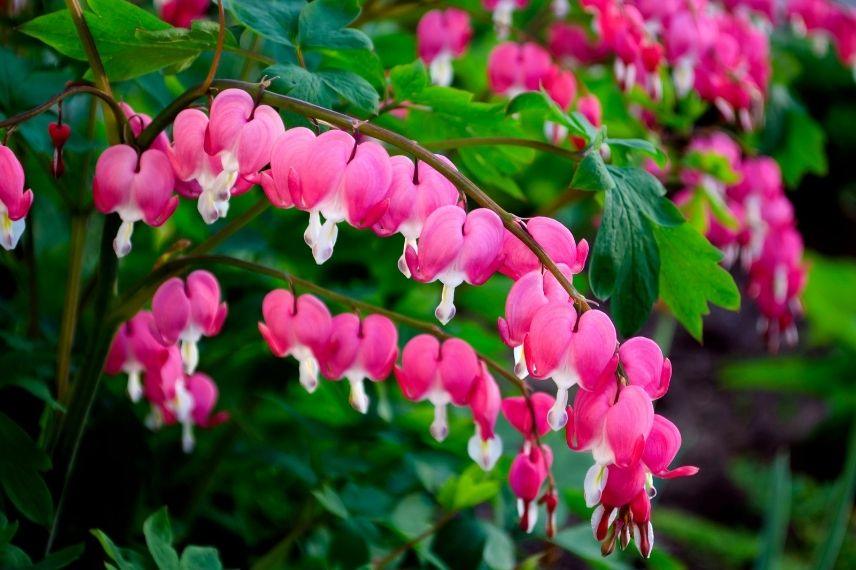
What type of pot to choose?
Bleeding heart should be planted solitary in a pot. The container should be approximately 40 cm deep and wide, so that the Dicentra feels comfortable. Ideally, prefer drainage holes in terracotta pots as they are more breathable than plastic pots. If there is no drainage hole at the bottom, drill one to ensure excess watering water can escape, thus preventing root rot.
What substrate for bleeding heart in a pot?
Bleeding heart prefers well-drained, humus-bearing substrates (rich in humus) that remain cool in summer, as drought is fatal to it. Additionally, it favours neutral or acidic soils. Prepare a mixture of equal parts garden soil, sand, and potting compost (or compost). Dicentra is also sensitive to excess water, as too much moisture around its roots can suffocate it and lead to fungal diseases.
Discover other Dicentra - Bleeding Hearts
View all →Available in 0 sizes
Available in 3 sizes
Available in 3 sizes
Available in 2 sizes
Available in 3 sizes
Available in 1 sizes
Available in 1 sizes
Available in 0 sizes
Available in 1 sizes
Available in 1 sizes
Which variety to choose?
Compact habit varieties are the perfect candidates for pot cultivation. Here are three with grey-green foliage:
- Dicentra ‘Ivory Hearts’ lives up to its name with its ivory white flowers and forms a homogeneous clump of 30 cm in all directions;
- Of the same size, Dicentra ‘King of Hearts’ offers soft pink flowering from May to June;
- Dicentra ‘Burning Hearts’ is slightly taller and produces bright pink flowers, hence its cultivar name “Burning Hearts”.
Some bleeding hearts tend to spread and can also be grown in pots:
- Dicentra formosa ‘Bacchanal’ is one of the darkest red flowering varieties;
- Dicentra formosa ‘Spring Gold’ boasts yellow foliage and can reach 35 cm in height with a spread of 50 cm;
- Dicentra cucullaria with its unique white bonnet-shaped flowers delights collectors.
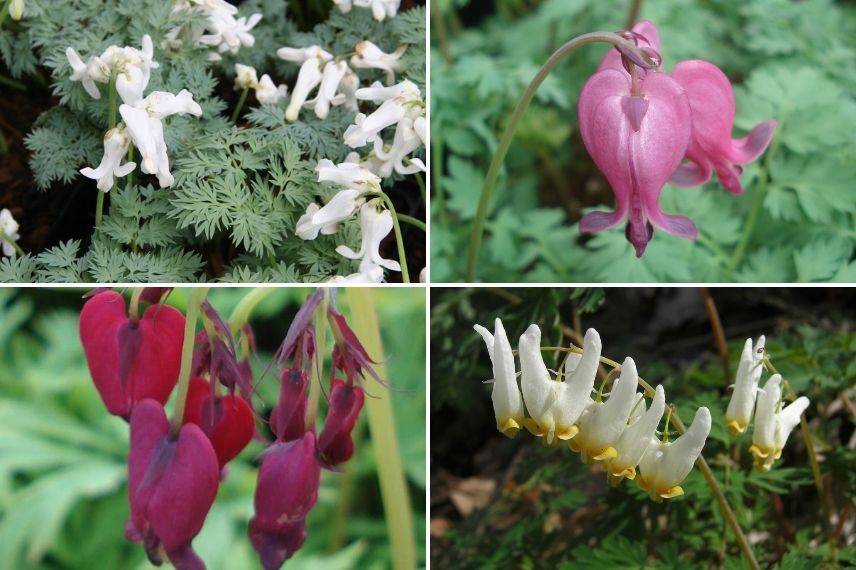
Dicentra ‘Ivory Hearts’, similarly sized Dicentra ‘King of Hearts’, Dicentra formosa ‘Bacchanal’ and Dicentra cucullaria (photo Wikipedia)
When and how to plant the bleeding heart in a pot?
Planting period
Planting the Bleeding heart in a pot is preferably done in early spring, from April to May, when the risk of frost has passed and before dry spells. It is also possible to plant it in autumn, from September to October, before the first frosts. The plant is in dormancy throughout winter and will only develop in the following spring.
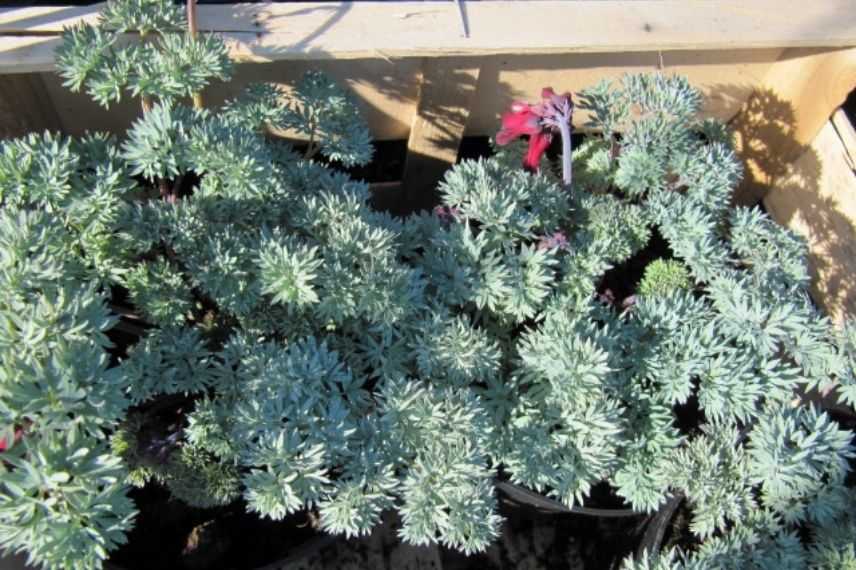
Young Bleeding Hearts ready to be planted in large pots (photo Leonora Enking – Flickr)
Planting
- Remove trapped air from the root ball by submerging it for a few minutes in a bucket of water. No bubbles should rise to the surface.
- Place a drainage layer of clay balls or gravel at the bottom of the container.
- Cover with substrate and create a hole to accommodate your plant.
- Gently remove your Dicentra from its pot, as these roots are fragile and plant it.
- Fill any empty spaces with your mix.
- Firm down and water generously.
What exposure does Bleeding heart in a pot need?
Bleeding heart appreciates semi-shaded exposures. This way, its medium remains moist and its flowering is ensured by the filtered light. It can tolerate gentle sun in the early morning or late evening, but not the scorching rays in the middle of the day. Very hardy, this perennial withstands low temperatures down to -15°C, or even lower depending on the cultivar and sheltered conditions. The least hardy varieties should be protected from prevailing cold winds, for example by placing them against a wall.
How to care for a bleeding heart in a pot?
Watering
Watering a potted Dicentra is essential. Be diligent, the soil must never dry out, nor be waterlogged! Empty the saucer of your pot if water is pooling, especially in winter. During the first spring and summer, watering should be regular, 1 to 2 times a week depending on your region. Observe the condition of your plant and touch the substrate. Apply a mulch to keep the soil cool. When the bleeding heart enters dormancy after flowering, the foliage will yellow, and watering can then be spaced out until growth resumes the following spring. Also, avoid watering the foliage, as this can lead to fungal diseases.
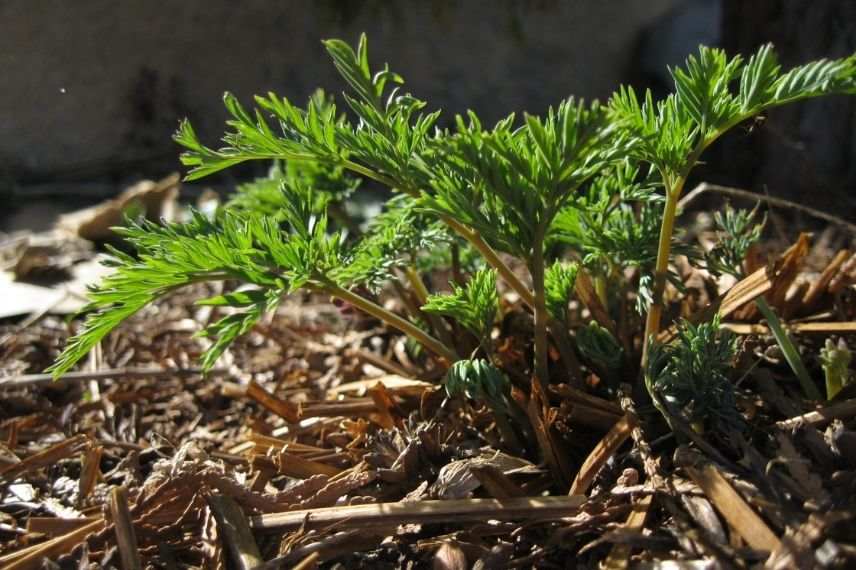
Resumption of growth in spring (photo Erutuon – Flickr)
Feeding
For the Dicentra, the application of fertiliser should occur after flowering. Once a year, enrich the surface of its pot with well-decomposed compost or a slow-release organic fertiliser. An overly rich substrate before the flowers appear would lead to excessive foliage growth at the expense of flowering.
Pruning
Throughout the flowering period, remove the faded stems that have borne flowers. Cut them back with pruning shears a few centimetres above the substrate. This will encourage the production of new flowers. The bleeding heart does not require pruning. However, for aesthetic purposes on your balcony or terrace, you can cut back the clump after flowering. For this, wait until the foliage has completely yellowed in mid-summer. The plant will then have had time to store energy in its roots for growth the following year.
Repotting
The bleeding heart has fragile, brittle rhizomatous roots, so it is best to avoid repotting to not compromise its flowering. This perennial does not like to be disturbed. From the outset, ensure you choose a sufficiently large container when planting. A minimum depth of 30 cm is obligatory, with 40 cm being ideal.
Wintering
Potted plants on a terrace or balcony are more sensitive to cold than those in the ground. If you are in a region with harsh winters, winter your pot in an unheated, bright location, such as a garage with windows or a conservatory, before the onset of severe cold. South of the Loire, your pot can remain outdoors. Add organic mulch at the base of your Dicentra, as over time the mulch degrades. Avoid pine-based mulch, which acidifies the soil. A layer of 7 cm is sufficient. Place your plant near a wall to protect it from the wind. You can also wrap the container in bubble wrap and elevate the pot using small blocks to ensure it does not come into direct contact with the cold ground.
Potential diseases and pests
Dicentra can be affected by powdery mildew or botrytis, which manifest as white powdery spots on the foliage for the former and grey mould for the latter. To learn more, consult our advice sheets Powdery Mildew or White Disease and Botrytis or Grey Mould.
Aphids, snails, and slugs are fond of its foliage. Fern manure is an excellent repellent. Discover our tips in our advice sheets Slugs: 7 Ways to Fight Effectively and Naturally and Aphid: Identification and Treatment.
For further reading
Everything you need to know about Mulching: Why? How?
Visit our guide on How to make fern manure? Recipe and uses to create your own repellent.
Discover our article on Potted plants: what is top dressing?
Check out our guide on Overwintering potted plants to protect them from the cold
- Subscribe!
- Contents
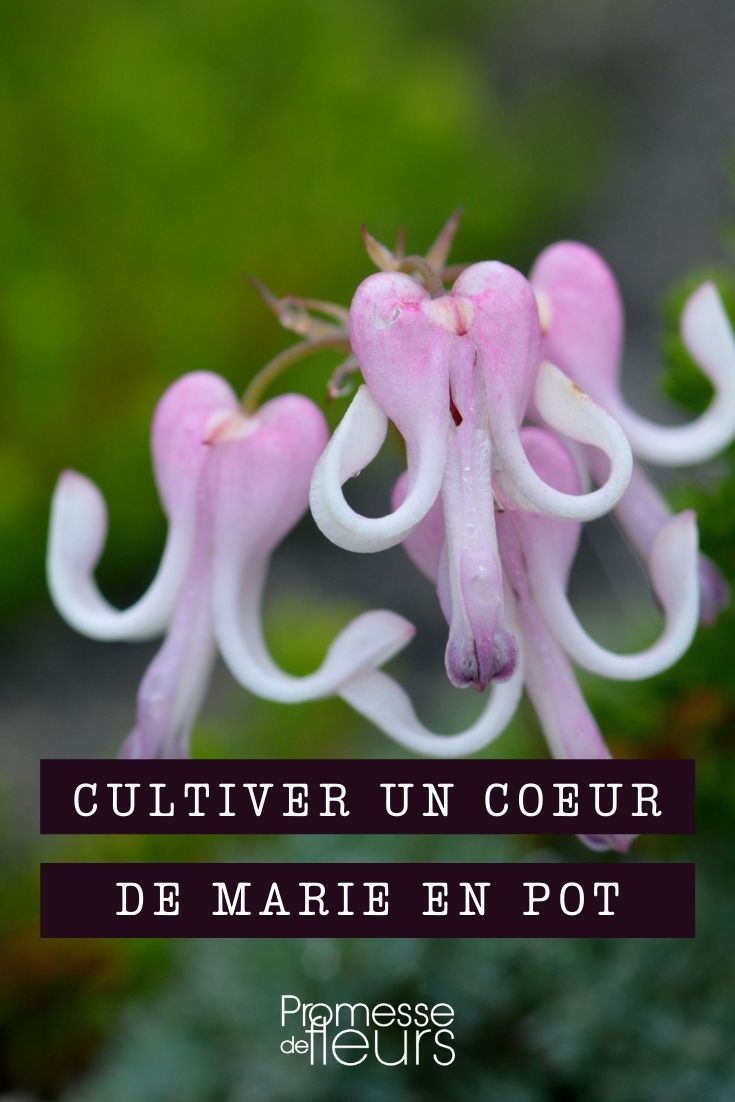































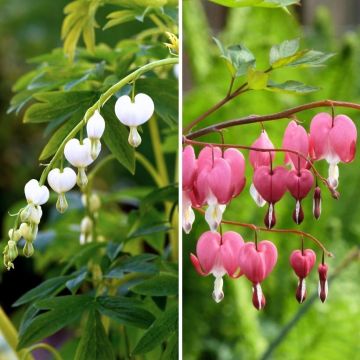
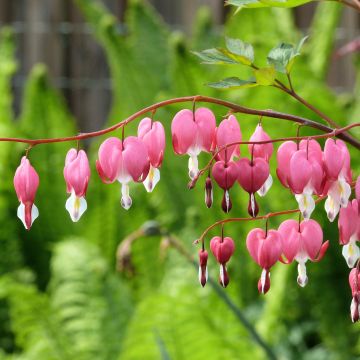
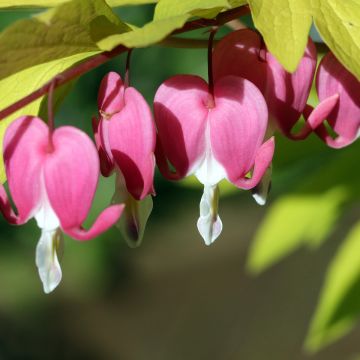
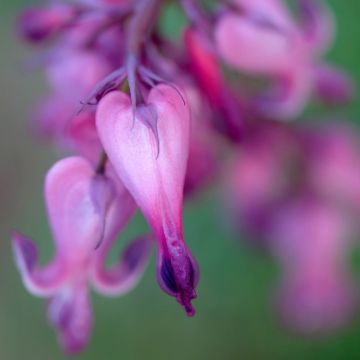
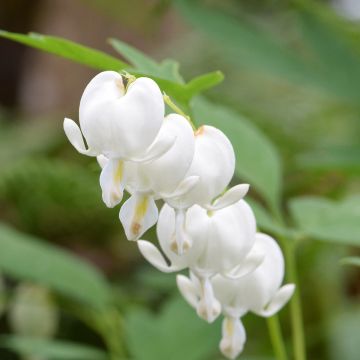
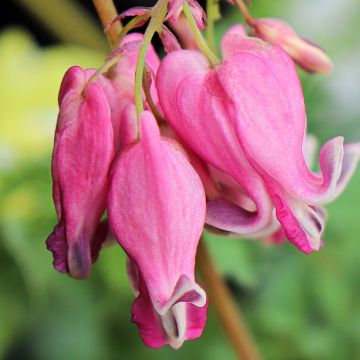
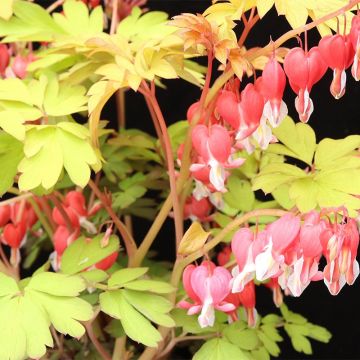
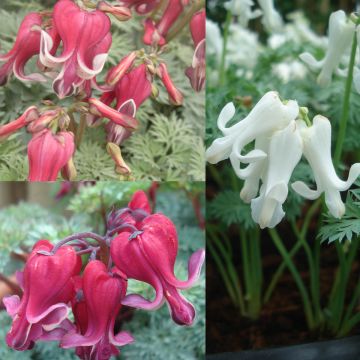
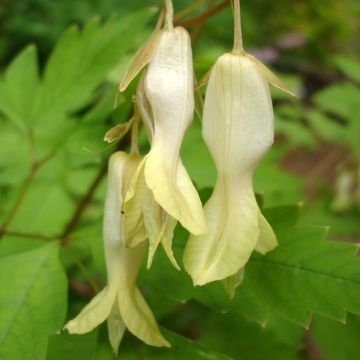
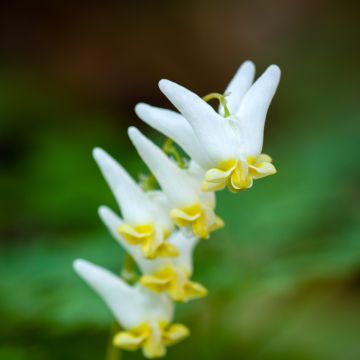
Comments